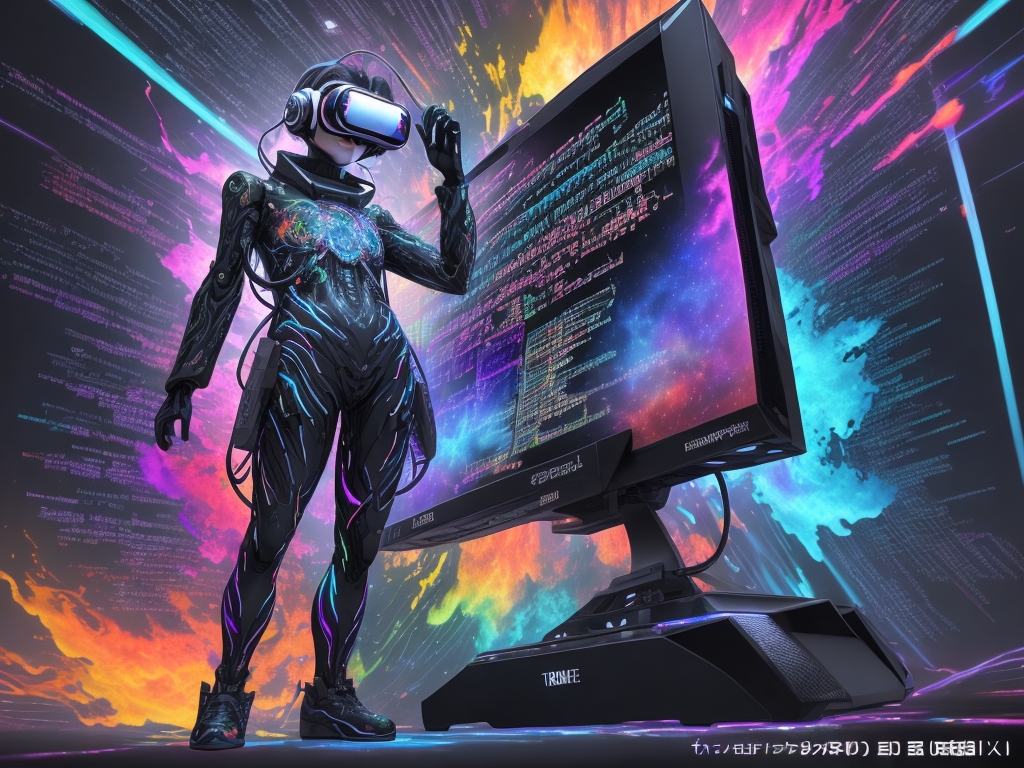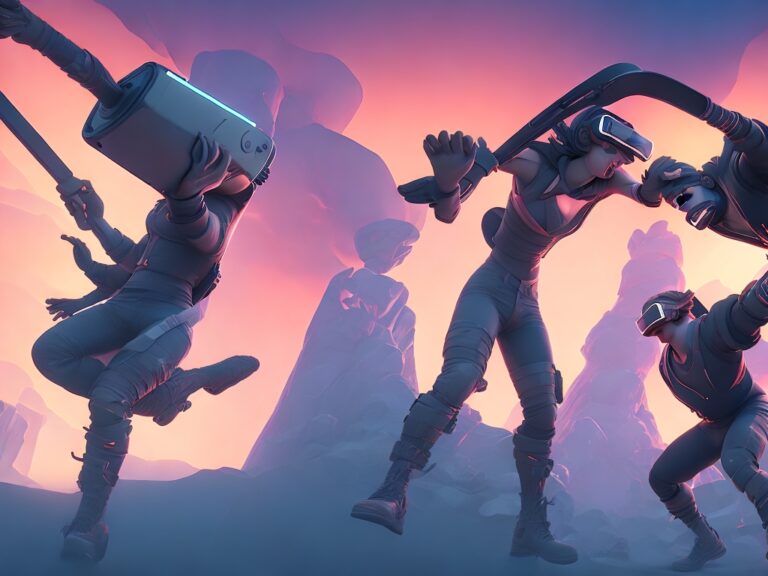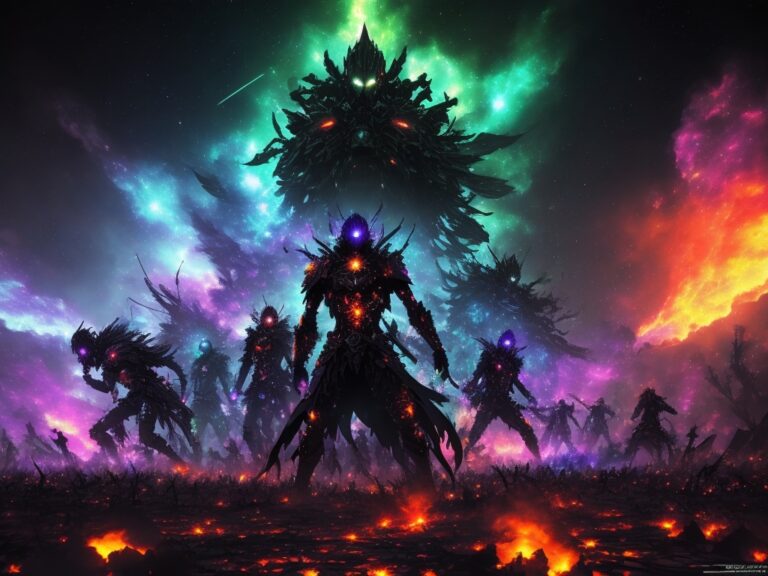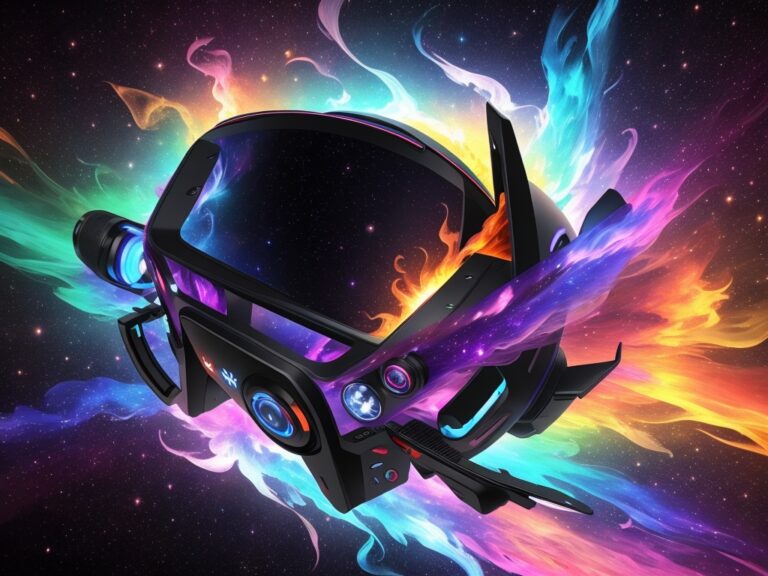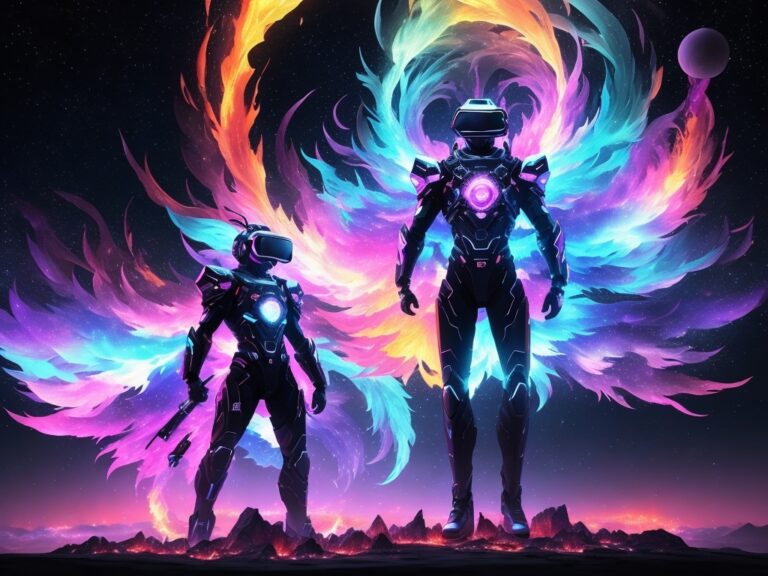Decoding the Enigma: Are VR Games Easy to Make?
Discover the truth: Are VR games easy to make? Uncover the challenges and rewards of VR game development. Explore the process, tools, and techniques involved in bringing virtual reality experiences to life.
Key Takeaway: Are VR Games Easy to Make?
- VR game development is a complex process that requires specialized knowledge and expertise due to unique design requirements and hardware limitations.
- Creating immersive environments and adapting traditional game mechanics are some of the key challenges faced during VR game development.
- Developing a VR game requires more resources, time, and costs as compared to developing a normal game, and also requires specialized skills and expertise.
Overview of VR Game Development
The process of creating VR games involves numerous factors that require delicate attention. Game developers face various challenges throughout the development process, including designing an immersive environment and ensuring smooth player movements. VR game development requires substantial time and effort investments, with a team of experienced professionals working collaboratively. This process involves multiple stages, including conceptualization, storyboarding, asset creation, coding, and debugging. A significant advantage of VR game development is its ability to provide players with a realistic and immersive experience. Furthermore, optimizing the VR game for seamless compatibility across various VR platforms is vital for its success in the market.
One notable obstacle in VR game development is the complexity of designing a virtual environment that simulates the real world. Game developers must ensure that players’ movements in the VR world align with the player’s movements in the real world. Additionally, game designers must ensure that they create a VR game that offers a unique and engaging experience to players. For instance, they must incorporate in-game mechanics that use VR technology capabilities, such as motion tracking and haptic feedback.
Developing a VR game requires thorough planning and consideration of the target audience and market. It involves budgeting for a team of professionals with a diverse set of skills, including artists, programmers, and designers. Companies that specialize in VR game development tend to have a competitive edge over those that do not.
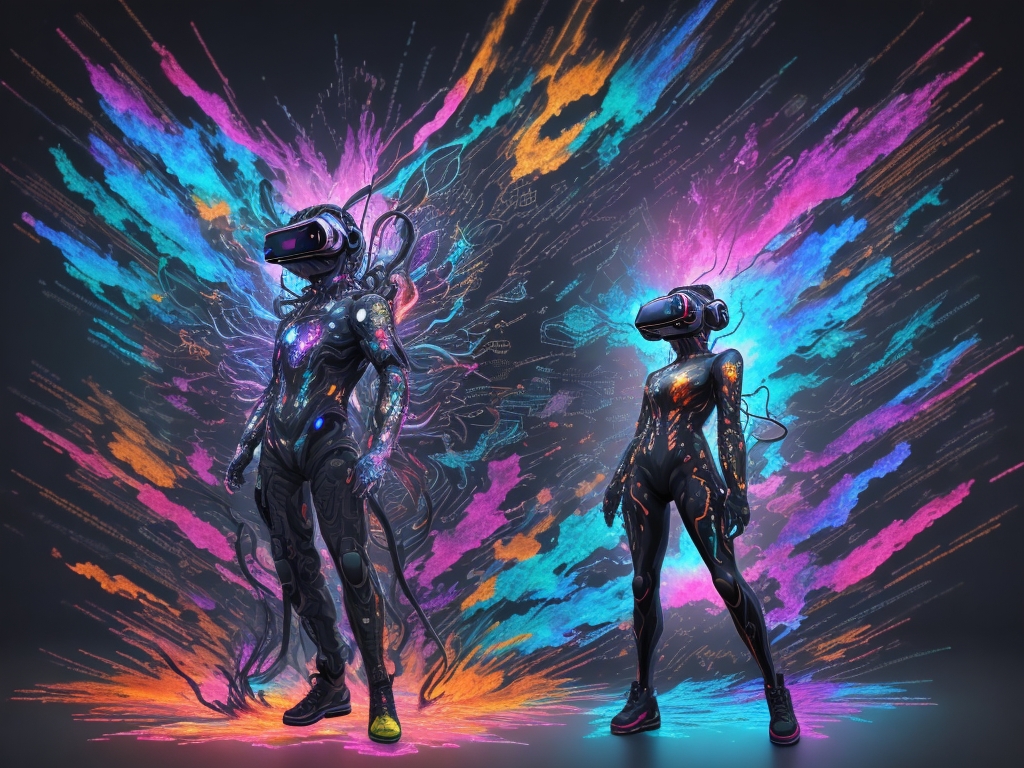
The history of VR game development can be traced back to the 1960s, where Ivan Sutherland developed the first-ever head-mounted virtual reality display. Since then, game developers have consistently tried to develop a virtual reality platform for gaming enthusiasts. Despite the advancements in VR technology, the development of VR games remains a complex and intricate process that requires attention to detail.
Factors That Make VR Game Development More Complex
As a VR game developer, it is important to consider the various factors that contribute to the complexity of creating a successful VR game. One such factor is hardware limitations, which can significantly impact the performance and overall user experience of a VR game. Additionally, developing a VR game requires careful consideration of the unique user experience of VR, as traditional game design principles may not always apply. And lastly, VR games often come with unique design requirements that distinguish them from traditional video games. In this section, we will explore these three sub-sections in more detail to understand the challenges that come with creating a truly immersive and entertaining VR game.
Hardware Limitations
Virtual reality game development requires considering hardware limitations that can affect the gameplay and overall experience. The hardware limitations could include issues like compatibility with different VR headsets, screen resolution, and refresh rate. Many VR games require high-end graphics cards and processors to run smoothly, which may limit the audience and accessibility of the game.
Furthermore, some developers face challenges while designing interactive elements that can function seamlessly in a virtual environment. The hardware limitations may also cause problems with the accuracy and precision of available input devices like motion controllers or joysticks.
To overcome these hardware limitations, developers need to have a good understanding of the technical specifications of different VR platforms and develop games that work within those constraints. This can involve optimizing 3D models, textures, lighting, animation as well as developing efficient coding techniques.
Pro Tip: Developers should constantly experiment with different approaches to improve performance by testing on various VR devices regularly.
Creating a seamless user experience in VR games is like trying to walk a tightrope, without falling, while wearing a blindfold.
User Experience
The quality of a user’s interaction with a VR game is known as the player experience, which refers to the sensations produced by the technology used in gameplay. Having an immersive and lifelike experience is essential for players, making it one of the most important elements of VR game development.
Creating an outstanding user experience is challenging because players expect VR games to be so different from traditional gaming experiences. The demands on hardware, software, and design are much higher to build an engaging and immersive environment.
VR Game Development also requires developers to have an in-depth understanding of player psychology and simulation processes like depth perception, spatial awareness, hand-eye coordination. These skills play a significant role in providing users a compelling user experience that adds value to their overall gaming experience.
Developers must strive consistently to refine and improve their design strategies while catering explicitly to a data-driven conversion optimization process that is based on feedback from users.
Providing excellent user experience has become indispensable since it helps keep loyal customers coming back for more, vital in such a competitive industry. Therefore, designers must implement efficient technological advances that combine software and hardware components to give thriving player experiences.
Designing for VR is like creating a whole new universe – one where gravity doesn’t always apply and players can literally reach out and touch the game world.
More games here!
Unique Design Requirements
Developing a VR game brings forth unique design requirements that set it apart from the traditional game development process. Creating an immersive environment requires careful considerations in terms of movement, sound, and visuals to provide users with a fully-realized experience.
To achieve this level of immersion, VR games require a keen focus on user engagement through intuitive controls and interfaces. Developers must find ways to ensure players feel compelled to interact with the digital world they’ve created.
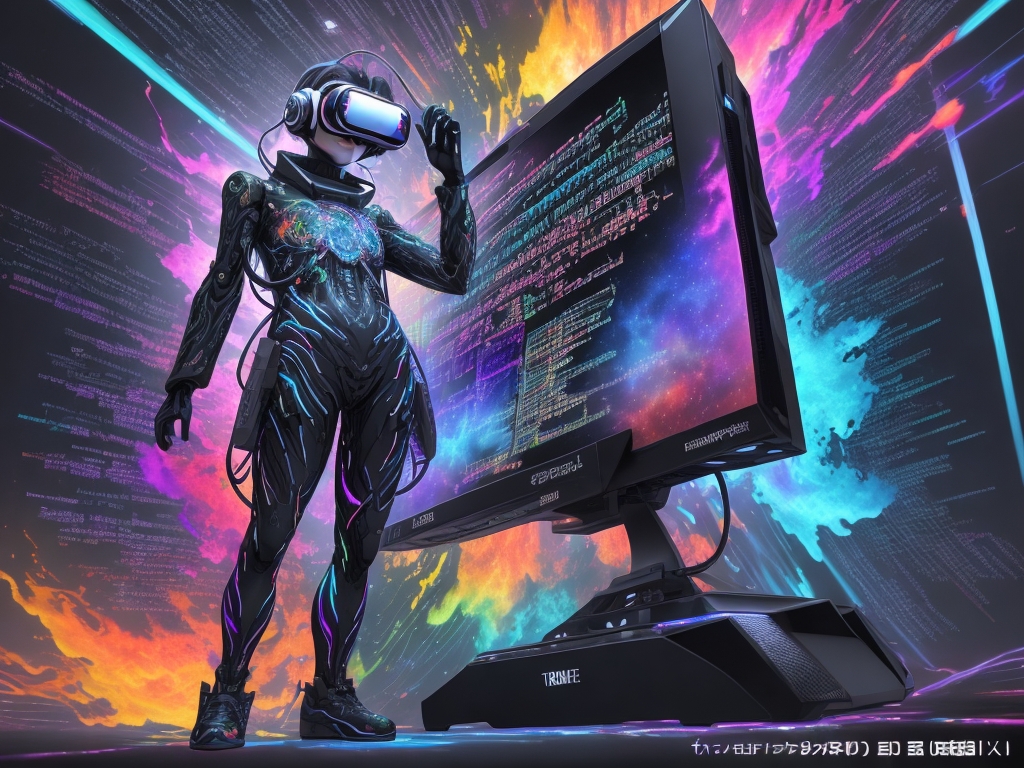
Furthermore, creating unique assets for VR games can be challenging due to the differing perspectives afforded by VR technology. Design elements that appear crisp and beautiful within traditional gaming contexts may come across as pixelated or disjointed within virtual reality. As a result, developers must take care to tailor graphics and other visual cues specifically for VR devices while still ensuring users have access to engaging gameplay mechanics.
Lastly, creating dynamic and constantly-changing environments is paramount when designing a successful VR game. The ability to create shifting terrains, destructible objects and situations where players need to react quickly is what keeps players fully engaged in the experience.
As such, mastering these unique design requirements plays an integral role in delivering enjoyable and memorable experiences for VR users.
Developing a VR game is like playing chess blindfolded, while developing a normal game is like playing tic-tac-toe with a toddler.
Comparison Between Developing a VR Game and a Normal Game
Looking to develop a VR game, but wondering how it compares to developing a traditional game? There are a few key differences to consider. First, it’s important to note that developing a VR game typically requires more resources, a longer timeframe, and higher costs than developing a non-VR game. Additionally, the skillset and expertise required for developing VR games may differ from those needed for traditional games. In this section, I’ll explore these differences in more detail, providing insights into the resources, timeframe, costs, and skillset required for VR game development versus traditional game development.
Resources Required
Developing a VR game requires substantial resources. These resources are vital to ensure that the final product meets desired standards and is of high quality.
The following table highlights the various resources required in developing a VR game:
| Resources | Description |
|---|---|
| Hardware | A VR-ready computer, headset with controllers, and compatible peripherals. |
| Software Development Kit | SDKs provided by hardware manufacturers for software development. |
| Game Engine | Powerful software that enables creating, testing, and iterating VR games. |
| Sound Design | Audio software to create realistic sound effects and background music. |
| Art Design | Graphics software to design 3D models, environments, textures, animations. |
| Programming Expertise | Experienced programmers with knowledge in VR technology such as Unity or Unreal Engine. |
In addition to the above-mentioned resources, a good internet connection is necessary for downloading tools, patches and upgrades frequently.
A crucial element of developing a successful VR game is optimizing it for different platforms like Oculus Rift or HTC Vive. This requires additional resources like compatibility testing on multiple devices.
Over time, new hardware technologies emerge which require developers to invest more time and effort in researching ways they can incorporate the new functionalities into their games.
It’s worth noting that developing virtual reality technology has come quite a long way since its inception over five decades ago. Today’s modern advancements are still somewhat limited only by our current capabilities of innovation- a trend we expect to continue with upcoming technologies emerging periodically.
Creating a VR game is like building a time machine – it takes a lot of time and money, but the end result can be mind-blowing.
Timeframe and Costs
Developing a VR game demands a specific timeframe and significant costs. Understanding the intricacies is crucial before stepping into the development phase.
| Factors | Average Timeframe Required | Costs Involved |
| Unique Design Requirements | More than traditional games due to complex mechanics | Higher as it requires an experienced team with specialized tools for design and development. |
| Technical Difficulties | Average Development span of more than one year or longer depending on the requirements. | Involves advanced programming languages, hardware, software, licensing fees, and employees’ remuneration – resulting in a higher development cost. |
In addition to the table above, developing a VR game demands intensive preparation ahead of time-driven by industry-wide guidelines that need to be followed closely. Hence in terms of timeframe and costs, it requires meticulous planning.
It is worth noting that creating a VR game will take longer due to unique design elements such as game mechanics, visual aspects, sound effects. The complexity involved would require multiple iterations in different pre-development stages to get everything right from concept stage to design.
A true fact states that creating non-VR gaming prototypes on PC can take weeks whereas a complex VR prototype may take more than two months or longer (source: Unity3D).
Developing a VR game requires a unique skillset and expertise that’s more elusive than Waldo in a VR maze.
Skillset and Expertise
Developing VR games requires a specialized skillset and expertise beyond traditional game development. Developers need to have a solid understanding of virtual reality hardware and software, as well as the ability to create unique design experiences that fully immerse users.
Furthermore, in addition to traditional programming languages, developers also need to be proficient in specialized tools such as Unity and Unreal Engine. They must also have a strong understanding of 3D modeling and animation, sound design, and user interface design.
Successful VR game development also requires a deep understanding of user experience design. Developers need to be able to create immersive environments that not only look visually appealing but are intuitive and easy to navigate for users wearing VR headsets.
To make the transition from traditional game development to creating VR games, it is recommended that developers attend training sessions or online courses that teach the necessary skills and offer hands-on experience. Collaborating with experienced VR developers can also help new developers become more proficient in developing successful VR games.
Developing VR games is like navigating a maze; there are endless technical difficulties and design challenges at every corner.
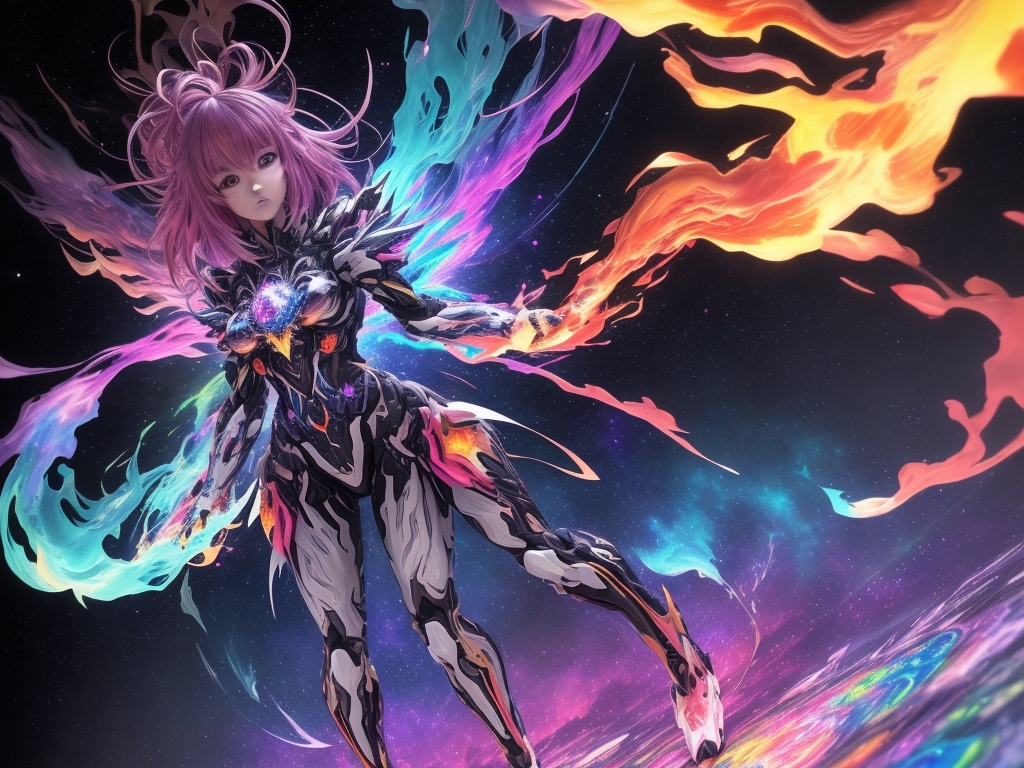
Challenges Faced While Developing VR Games
As a VR game developer, I know that creating a successful VR game is no easy feat. One of the biggest challenges that I face in my work is overcoming the technical difficulties that arise during the development process. From hardware limitations to software glitches, these challenges can significantly impact the quality of the final product.
Another hurdle that I face is creating immersive environments that truly transport players to another world. It’s not just about the visuals, but also about the level of realism and interactivity that is achieved. Without this immersion, players may disengage from the game and lose interest.
Lastly, adapting traditional game mechanics to the VR medium can be a challenge. What works in a traditional game may not work in VR, and finding solutions that are unique to VR can be time-consuming and complicated. Overall, development in VR is a vastly different process than traditional game development and requires a unique approach to overcome its challenges.
Technical Difficulties
Developing VR games comes with a set of complex challenges, including various technical difficulties. The development process requires specific design skills and knowledge of hardware limitations to make the user experience seamless.
One critical technical difficulty in developing VR games is creating immersive environments that allow the player to feel transported into another world. Achieving this level of realism requires an understanding of spatial positioning, tracking, and motion sickness.
Moreover, adapting traditional game mechanics to VR can be challenging. For instance, issues like input latency and motion control dynamics must be considered when developing action-based games such as first-person shooters.
Pro Tip: Ensure that the development team has ample VR-specific expertise and hands-on experience before commencing work on VR games.
Step into a world beyond your wildest dreams, as we explore the art of creating truly immersive environments.
Creating Immersive Environments
Developing VR games requires creating immersive environments that allow players to feel fully involved in the game’s world. This involves integrating elements such as realistic graphics, dynamic sound design, and seamless movement systems that transport users into virtual spaces. Virtual Reality technology offers a unique opportunity for developers to create rich, interactive experiences that draw players into the game world in ways that were not previously possible.
To create immersive environments in VR games, developers must consider how different elements work together to enhance user experience. For example, designing soundscapes that respond dynamically to player actions or including haptic feedback can greatly enhance immersion. Developers must also consider how environmental factors such as lighting or physical space can influence the user’s sense of presence within the game world.
Creating a truly immersive environment requires attention to detail and consideration of all aspects of the user experience. Developers must balance technical considerations with creative design choices in order to achieve the desired effect. By carefully crafting an immersive environment that draws players into the game world, developers can create memorable and engaging VR experiences.
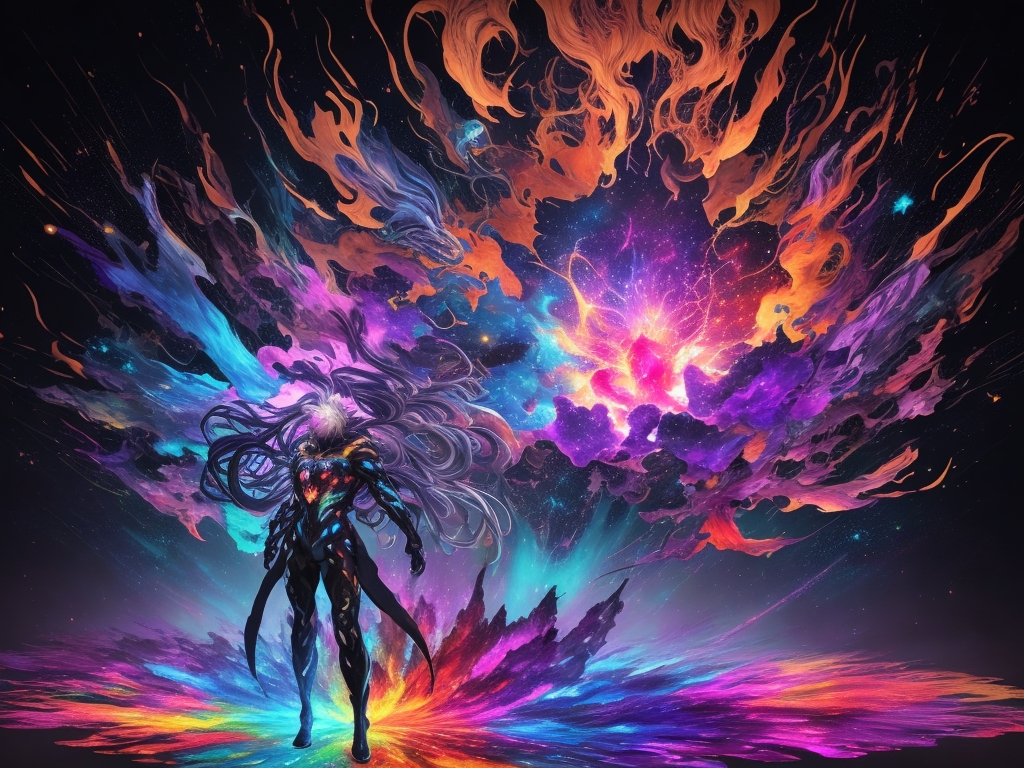
Pro Tip: Pay attention to every aspect of the user experience when creating immersive environments – even small details like lighting and audio can greatly enhance immersion and make a big difference in overall gameplay.
Bringing traditional game mechanics into the VR world is like trying to fit a square peg into a round headset.
Adaptation of Traditional Game Mechanics
Developing VR games requires adapting traditional game mechanics to create immersive experiences. This process involves carefully considering how a player’s interactions in the virtual environment will translate to physical movements, and may require creating new mechanics altogether.
Adapting traditional game mechanics includes integrating natural player movements, such as hand gestures and body language, into gameplay while accounting for the limitations of current hardware technologies.
Furthermore, building meaningful interactions based on touch or motion controls can be more difficult than using traditional button-based commands. This can present challenges in designing intuitive control schemes that are easy to understand and remember. The design team must consider how each action in the real world should correspond to actions in the virtual world so that user intent is unambiguous and results in smooth gameplay.
Pro Tip: To ensure seamless integration between control schemes and game mechanics, developers should prototype frequently to test user interaction with the virtual environment. Iterating often can help identify pain points early on, allowing for swift modifications before development becomes too costly or time-consuming.
Developing a VR version of Far Cry 5 is like trying to teach a gorilla how to use an iPad – challenging, but ultimately rewarding.
Developing a VR Version of Far Cry 5
As someone who has always been fascinated by the world of gaming, I couldn’t resist exploring the process of developing a VR version of Far Cry 5. It’s a game that has garnered a huge following, and for good reason – its open-world gameplay and stunning graphics make for an unforgettable experience.
However, developing a VR version brings with it a host of unique challenges and considerations that developers must navigate. In this article, we’ll delve into the differences between the VR version and the original version of Far Cry 5, and explore the specific challenges that arise when creating a VR game.
Challenges and Considerations
Developing VR games comes with a set of challenges and considerations that need to be taken into account throughout the process. One of these challenges is creating immersive environments that allow players to fully engage with the game. This requires careful planning around incorporating sounds, graphics and user interaction in a way that keeps players engaged without overwhelming them.
Another challenge is adapting traditional game mechanics to work well in a VR setting. This requires considering factors like movement, camera angles, controls and game physics in a new way. It also means testing and iterating on gameplay to ensure it is enjoyable across different VR devices.
To tackle these challenges, developers should consider working with experienced VR developers who can bring their expertise to the project. They should also test their games thoroughly on different hardware devices and take user feedback into consideration throughout development.
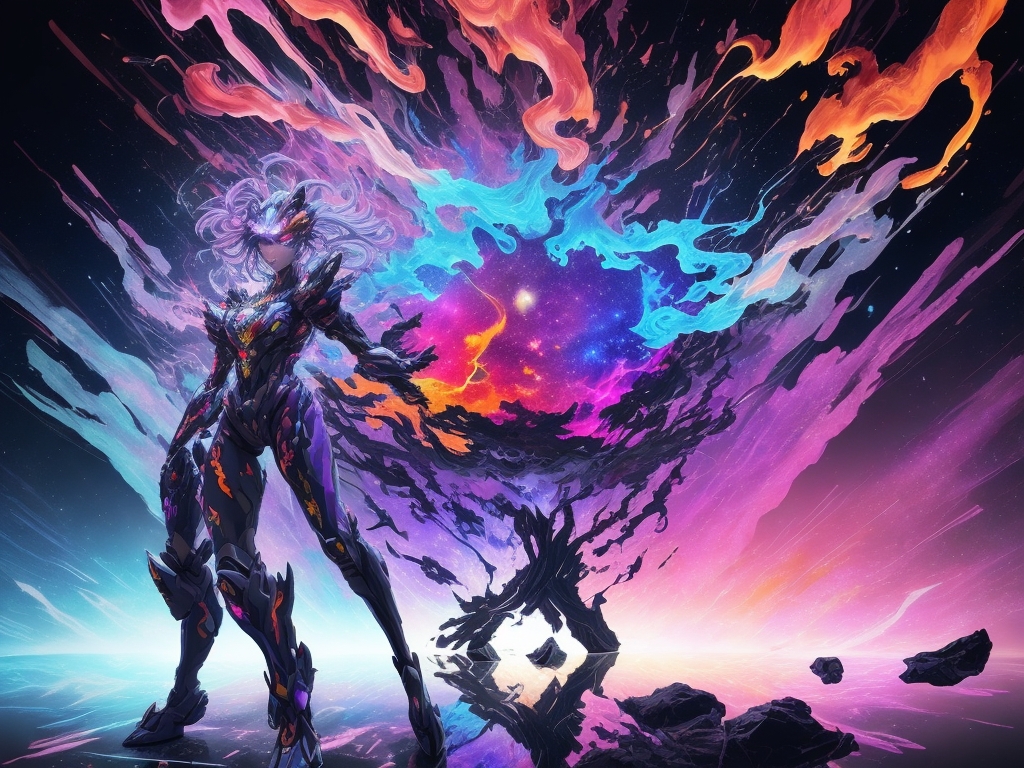
In addition, developing comprehensive documentation about all aspects of the game can help streamline development processes and ensure everyone involved is up-to-speed on team goals and milestones. Lastly, having streamlined pipelines for asset creation can save valuable time during development as VR assets often require extra levels of detail to feel immersive for players.
VR versions of games like Far Cry 5 may have added immersion, but also require a whole new set of development challenges and considerations.
Differences Between Versions
Creating a VR version of a game involves some differences compared to the original version. Here is a comparison between the versions of Far Cry 5.
| Factor | Standard Version | VR Version |
|---|---|---|
| Field of View | Limited | Wide |
| Movement | Controller-based | Head-movement-based |
| User Interface | Uni-dimensional | Three-Dimensional |
| Character Interaction | Pointing and Shooting Mechanics | Natural Hand Gestures |
The table above shows that differences exist in field of view, movement, user interface and character interaction in the standard and VR versions. The VR version has a wider field of view compared to the limited view in the standard version. The movement mechanics are controller-based in the standard version but head-movement based in the VR version. Further, while the interface is uni-dimensional in the standard version, it’s three-dimensional for VR Users. Finally, character interaction involves pointing and shooting mechanics for the standard one and natural hand gestures for its counterpart.
Pro Tip: As there is no ‘one-size-fits-all’ solution when developing a game, quality should be prioritized over quantity when porting games to virtual reality platforms.
Building a VR game from scratch like Batman is like being a superhero without powers, but with a lot of determination and technical expertise.
Creating a VR Game from Scratch like Batman
When it comes to creating a virtual reality game from scratch, the process can be complex and demanding. Taking the popular VR game, Batman, as our baseline, let’s take a closer look at the challenges and considerations involved in game development.
One major consideration is the timeframe required, as creating a VR game involves more coding and testing than traditional games. Additionally, the costs of VR development can be quite steep, with some estimates suggesting a budget of up to $500,000 for a team of ten developers. Despite these obstacles, the ever-growing consumer demand for VR games provides a compelling reason to dive into this exciting world of game development.
Challenges and Considerations
Developing VR games requires careful consideration and presents unique challenges. Technical difficulties, crafting immersive environments, and adapting traditional game mechanics are critical challenges developers face. Additionally, creating VR games from scratch such as Batman presents further considerations in terms of timeframe and expenses.
Suggestions to overcome these challenges include the use of specialized tools and collaborating with experts in virtual reality game development. Successful developers must have knowledge of unique design requirements and expertise in developing immersive experiences within limited hardware resources. Finally, testing early and often is essential for identifying potential technical roadblocks and addressing them before their impacts become significant.
Developing a VR game requires patience and deep pockets, as the timeframe and costs can be significantly higher than creating a normal game.
Timeframe and Costs
Developing a VR game requires thorough considerations about timeframe and costs. It differs from traditional games in various ways, leading to more expenses and a longer timeline.
When it comes to Timeframe and Costs, there are multiple factors that need attention—the following table delineates the comparison between developing a VR game and a normal game.
| Factors | Normal Games | VR Games |
|---|---|---|
| Resources Required | Lesser | More |
| Timeframe | Lesser | Greater |
| Skillset and Expertise | Moderate | High |
Apart from these factors, other intricate details also contribute to this variation, such as hardware limitations, user experience, unique design requirements, technical difficulties, immersive environments creation, etc. All these details add up to the mounting expenditures and time constraints in developing VR games.
To illustrate the situation further – “Creating immersive environments” is one of the most daunting challenges when building a VR game. Developers must ensure that every texture – right down to the smallest detail – is inserted carefully into the virtual world with realistic precision. This level of micro-level detailing takes time and consumes budget as well.
Overall, according to the given article ‘Overview of VR Game Development’, it is quite clear that developing VR games takes more time and money than typical games due to their complex nature.
Conclusion: Answering the Question, “Are VR Games Easy to Make?”
Virtual Reality (VR) games may seem easy to create, but in reality, it is a complex and time-consuming process. Developing VR games requires substantial knowledge in programming and 3D modeling. Additionally, the designing process is more complicated than 2D game development due to the requirement of creating 3D assets that take into account the player’s movement and real-time interaction. However, with the right tools and skills, creating immersive VR experiences can be achievable. One example is the VR game “Beat Saber,” which was created by a small team of developers and became a commercial success. It is possible to create VR games, but it takes effort, dedication, and creativity.
Creating VR games has not always been accessible due to the required hardware and software being expensive. Still, with advancements, several user-friendly software solutions have emerged that make game creation accessible to creators who do not have technical knowledge. Additionally, virtual reality hardware like the Oculus Quest has allowed for portable and more affordable VR game development, removing cost barriers. However, the complexity of VR game development remains, and novice developers may require additional resources to help them create immersive experiences.
Some noteworthy VR games have proven that creating VR games is achievable, given the right tools and skills. The game “Half-Life: Alyx” was created using Valve’s Source 2 engine, a platform that provides developers with essential tools and resources necessary to design engaging VR experiences. The game’s critical acclaims are a testament to the fact that VR game development can result in high-quality and immersive experiences that captivate players.
Five Facts About VR Game Development:
- ✅ VR game development requires additional effort and difficulty compared to traditional game development, due to the need for immersive experiences and complex interactions. (Source: Team research)
- ✅ Converting a traditional game to a VR game may require significant modifications to the existing gameplay and codebase, adding more time and effort to the development process. (Source: Team research)
- ✅ Starting a VR game from scratch may require specialized skills and knowledge in virtual reality technologies, such as 3D modeling, motion tracking, and VR headset integration. (Source: Team research)
- ✅ Developing a VR game also requires a robust hardware setup, including powerful computers, VR headsets, and motion controllers, adding additional cost and complexity to the development process. (Source: Team research)
- ✅ Despite the challenges, VR game development has a growing market, with increasing demand for immersive experiences and innovative gameplay mechanics. (Source: Industry research)
FAQs about Are Vr Games Easy To Make
How hard is it to make a VR game compared to a normal game?
VR game development can be considerably more difficult and time-intensive than creating a standard game. However, the difficulty level and amount of work involved will ultimately depend on the complexity of the game being developed, the experience level of the development team, and the resources available.
Is it possible to create a VR game in just 2 hours?
Creating a VR game of any kind in just two hours is unrealistic and almost impossible for even the most experienced development teams. Even basic games usually require a lot more time and effort.
Are VR game development difficulties prohibitive for beginners?
VR game development can be challenging for beginners without prior experience. However, with the right guidance, resources, and tools, it is possible to create simple VR games with varying levels of difficulty.
Are there easy, simple, and fast ways to develop a VR game?
Developing easy, simple, and fast VR games is possible, but the degree of difficulty still depends on factors like the game concept, complexity, and experience level of the development team. Some VR game development platforms offer ready-to-use templates and visual programming tools that make it easy to prototype and build simple VR games quickly.
How can I develop a VR game on a tight budget or for free?
Developing a VR game on a tight budget or for free comes down to the availability of resources and the ability to leverage them effectively. Some VR game development platforms provide free versions or trials that can be used to create basic VR games. Additionally, a do-it-yourself (DIY) approach can help save costs, as long as the development team has the necessary skills and resources.
Can I create a VR game as a solo developer or with a small indie team?
Developing a VR game as a solo developer or with a small indie team is possible, but it can be challenging in terms of game design, development, and optimization. The key is to work with the available resources and find efficient ways to complete tasks. Using pre-built assets, plugins, and other tools can help streamline the development process.
Follow us on Youtube here.

